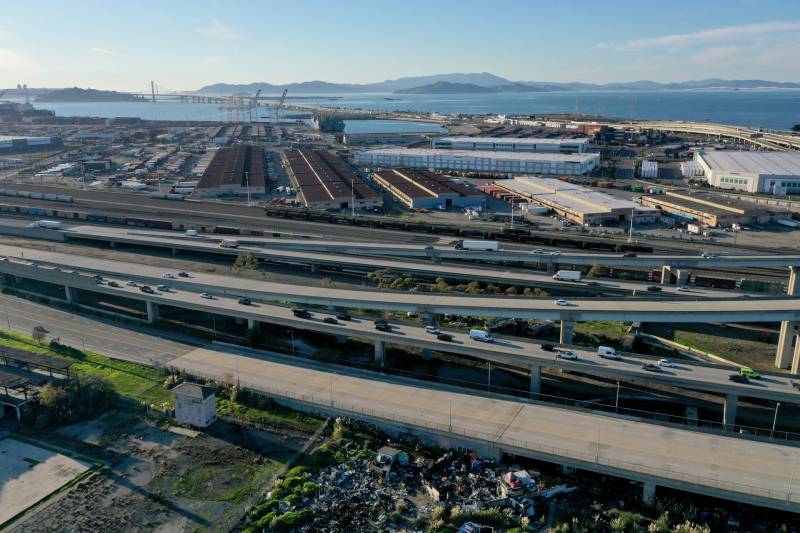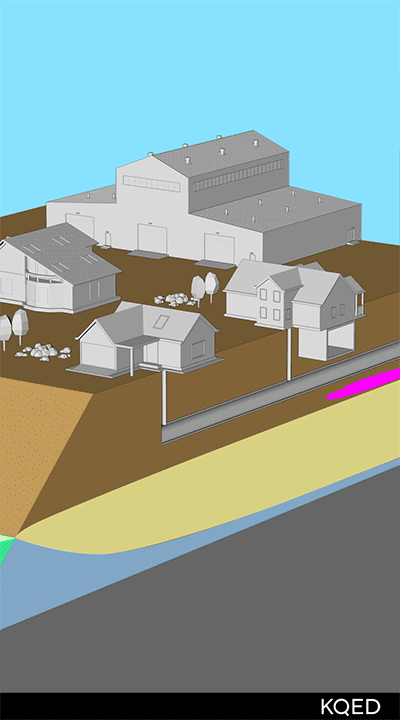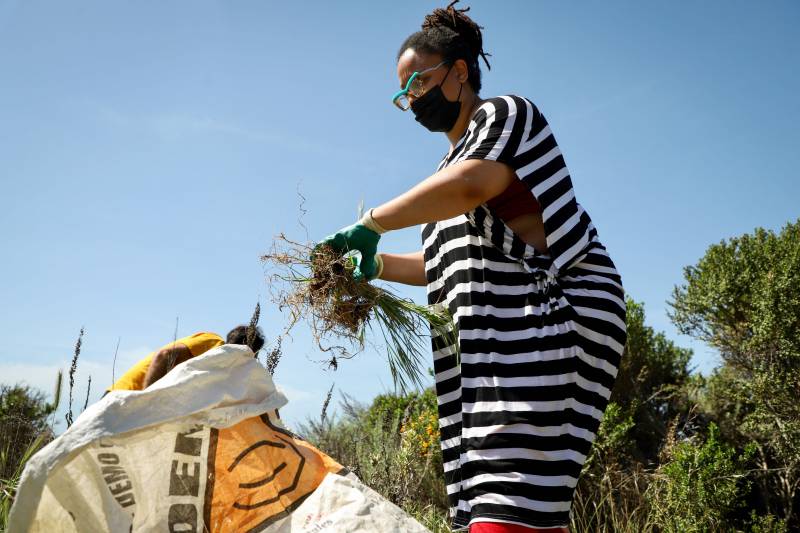Phoenix Armenta is worried about the future of neighborhoods along the edge of San Francisco Bay. Contaminated sites litter shoreline communities like West Oakland, where Armenta works as a community organizer. As climate change pushes bay water higher, floodwaters could mix with toxic pollution and threaten people’s health.
How Rising Sea Levels Could Push Up a 'Toxic Soup' Into Bay Area Neighborhoods

“I’m concerned that water is going to get into people’s homes,” said Armenta, regional resilience manager for the West Oakland Environmental Indicators Project. “They’ll be polluted with a toxic soup.”
Two separate science groups have released updates to ongoing research exploring this threat for the Bay Area.
Scientists and the state have well documented the potential impact of sea level rise on the California coast.
These researchers are examining an under-studied threat: rising ocean water driving fresh water up from the ground, which could move as far as three miles inland from the edge of the bay, according to a summary of ongoing work shared with KQED.
Pathways Climate Institute and the San Francisco Estuary Institute forecast that groundwater will move into low-lying areas of San Francisco, San Mateo, Alameda and Marin counties, potentially seeping past seawalls, flooding basements, overwhelming sewers and damaging building foundations.
The study is slated to be released in August.
Scientists from UC Berkeley and UCLA are concerned that the groundwater will steep in toxic pollution before spreading into neighborhoods and the bay itself. They found that more than 900 toxic sites could be affected by both sea level rise and groundwater rise across the state by the end of the century.
Communities like West Oakland — which abuts one of the West Coast’s busiest ports and is bound by busy freeways — already are dealing with high levels of air pollution and other adverse health outcomes because of their proximity to industry and its waste.
Armenta, who uses they pronouns, heads the Oakland Shoreline Leadership Academy, teaching students of all ages about the issues for shoreline communities — including sea level rise and contamination.
The goal is to give the students “who want to be part of the solution” an understanding of local shoreline issues, they said.
“In Oakland, where there was redlining is exactly where all the toxic sites are. And exactly where all the sea level rise is going to happen,” Armenta said.

Climate justice red flags
UC Berkeley’s Rachel Morello-Frosch and UCLA’s Lara Cushing are the scientists behind the Toxic Tides interactive tool.
Last November, they released a stunning finding: About 400 sites — power plants, sewage treatment plants, refineries, cleanup sites and others — across the state are at risk of inundation, based on various sea-level-rise scenarios.
Their latest analysis found more than double that could be affected statewide, if more extreme scenarios and additional groundwater are considered. The scientists say they don’t see signs that greenhouse gas emissions are decreasing.
“[The global] response to reducing emissions is quite underwhelming,” Morello-Frosch said of international efforts to limit warming. “Some scientists in the climate change community may feel like that’s too much of a severe estimate, 10 feet of sea level rise, but it’s important to show when we’re thinking about land-use planning.”
The take-home message of their work is that climate change is presenting new risks that could lead to human exposure to hazardous materials all along the California coastline, with a high Bay Area concentration.
Use your mouse to move different directions on the map. Use the + and – signs to zoom in and out. Click on the magnifying glass at the bottom to search for a specific site. Click on each site for details. Click on the down arrow top right of the legend to remove it. Sources: UC Berkeley, UCLA
As a historical central hub for commerce, the region has a legacy of contaminated sites from shipbuilding, computer chip manufacturing and other industry.
The pair’s work raises major red flags regarding climate justice. Many of these places are neighborhoods of color, where residents are increasingly at risk from the effects of warming temperatures.
“Communities of color are much more likely to live near one of these risk sites, as are lower-income communities or communities where English is not the primary language that’s spoken,” said Cushing.
The new analysis is innovative because it uses groundwater depth data from the U.S. Geological Survey alongside climate models.
Morello-Frosch says sea level rise will push groundwater up, “particularly in sites where there are toxic contaminants in the soil.”
They’re concerned that as seas rise, sites where contamination has been capped, partially cleaned up or never addressed could be disturbed, threatening Bay Area shoreline communities already fighting for pollution cleanups.
The scientists say that local groundwater mapping and “deep assessments” are crucial steps to understand specific local threats.
“Communities can use this information to develop their own strategies at the local, county and statewide scales to begin to respond,” said Morello-Frosch.
She added, “unlike a hurricane, which is happening right away, this is a very slow-moving storm that we do have time to respond to.”
Filling a data gap
Alameda, Marin, San Francisco and San Mateo counties are partnering with scientists from Pathways Climate Institute and the San Francisco Estuary Institute.
The authors note that flooding has the “potential to damage building foundations, flood basements and other below grade structures, and to infiltrate and overwhelm sewers. Ultimately it may emerge aboveground as an urban flood hazard even before coastal floodwaters overtop the shoreline.”
They also warn of “contaminants in the soil” entering buildings through sewer lines or other pathways.
While they released the two-page document describing the work, they are not commenting until the research is finished later this summer.
The scientists are compiling and sorting through multiple datasets to understand the risk to infrastructure in low-lying areas.
They want to expand their work to all Bay Area counties, if they can find funding for the project.
The memo says a “failure to acknowledge” the threats, especially in underserved communities, “could undermine the success of adapting to sea level rise and potentially threaten public health and the environment.”
